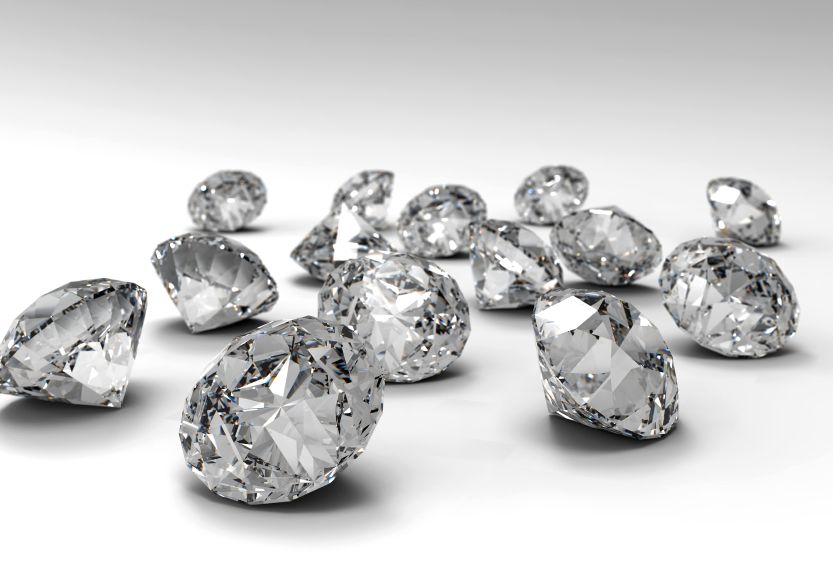One of the most discussed “C’s” of diamond’s Four C’s is clarity. In 1953 the Gemological Institute of America created the clarity chart defining different grades of diamonds based on common characteristics. This chart ran from Flawless to Imperfect and is still the benchmark used today by all diamond graders.
The reason clarity is often a point of controversy is that it is entirely subjective. No two diamonds are exactly alike so while their overall complexion may be similar it is hard to put a perfect grade on a diamond.
Simplifying clarity grading one wants to look for the nature and number of characteristics a diamond possesses. All clarity grading is performed under 10X magnification. The nature of a characteristic or flaw may be black or white, large or small, external or internal, positioned in the center of the diamond or at the edge. The number is simply that, the sheer quantity of flaws. The clarity grades have corresponding numbers meaning one grade is better than another. For instance, a VS1 diamond is better than a VS2, though they both belong in the VS category. This doesn’t necessarily mean a VS1 diamond has one inclusion and a VS2 has two.
In an attempt to make clarity grading easier certain buzzwords were developed. Flawless and Internally Flawless are self-explanatory. The VVS1 and VVS2 grades mean the diamond is Very Very Slightly Included. The defining word here is, minute. These diamond’s flaws are minutely visible under 10X magnification. VS1 and VS2(Very Slightly Included) possess minor inclusions. SI1 and SI2(Slightly Included) have noticeable inclusions. Nearly everyone in the diamond industry adds an SI3 to this list. These are diamonds that aren’t quite as included as an I1 and just not quite meeting the definition of an SI2. GIA does not recognize SI3 and therefore, do not include it on their list. Occasionally SI2 and SI3 diamonds may have blemishes visible to the naked eye.
The Imperfect or I clarities require even further explanation. The buzzword here is obvious. It is very common to see inclusions to the unaided eye in these grades which makes them obvious under 10X magnification. I1 diamonds have flaws that somewhat affect the brilliance and durability of a diamond. I2 diamonds’ flaws seriously affect either a diamond’s brilliance or durability while an I3’s brilliance and durability are both seriously affected.
It is not uncommon to find this grading system somewhat confusing. A question frequently asked is why there are even two categories in a clarity grade. How can one diamond’s minor inclusions be more or less minor? And this is one of the nuances of diamond grading. The more time you spend grading diamonds and comparing them to GIA certified diamond the greater “clarity” you will have.

